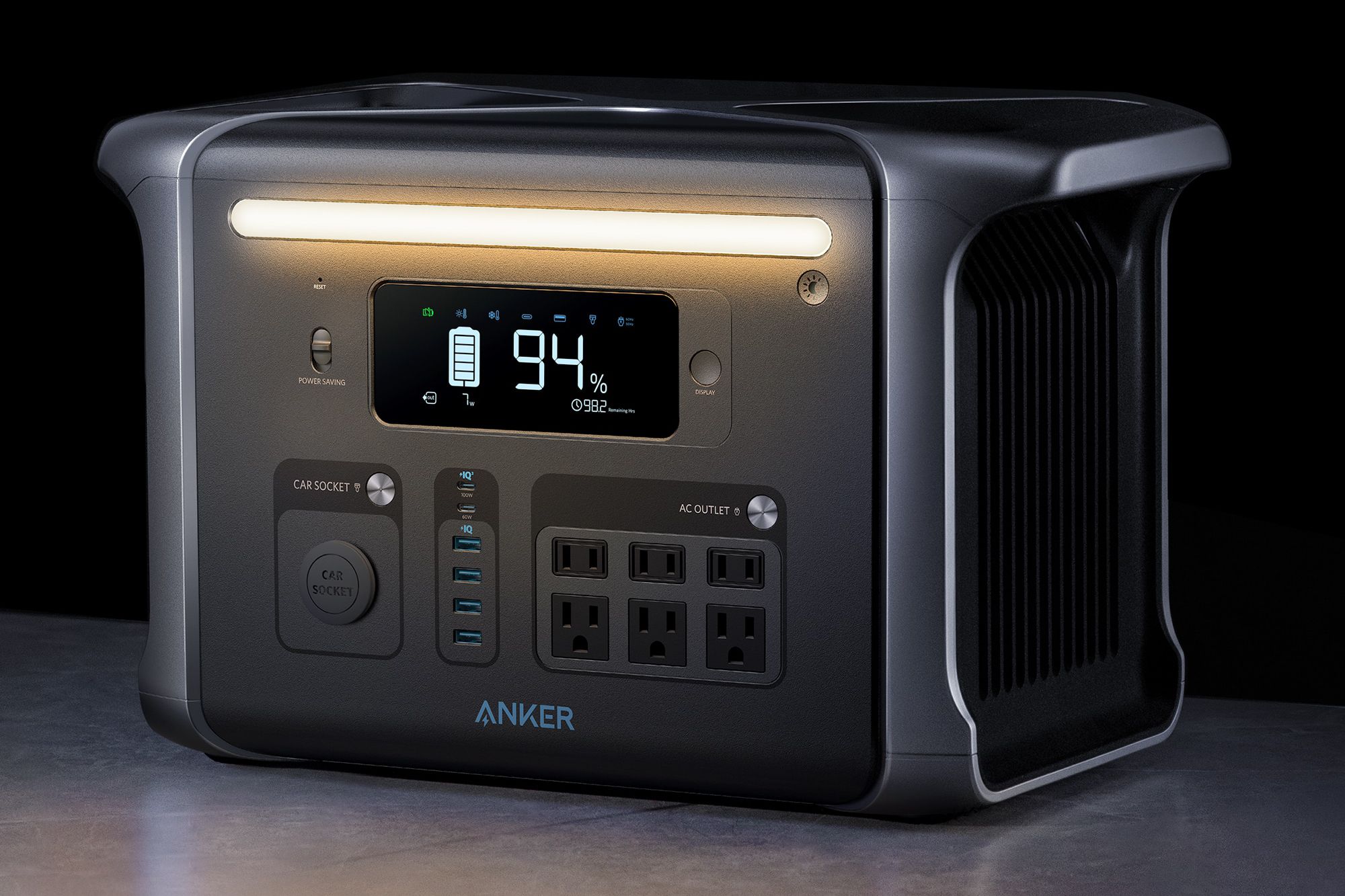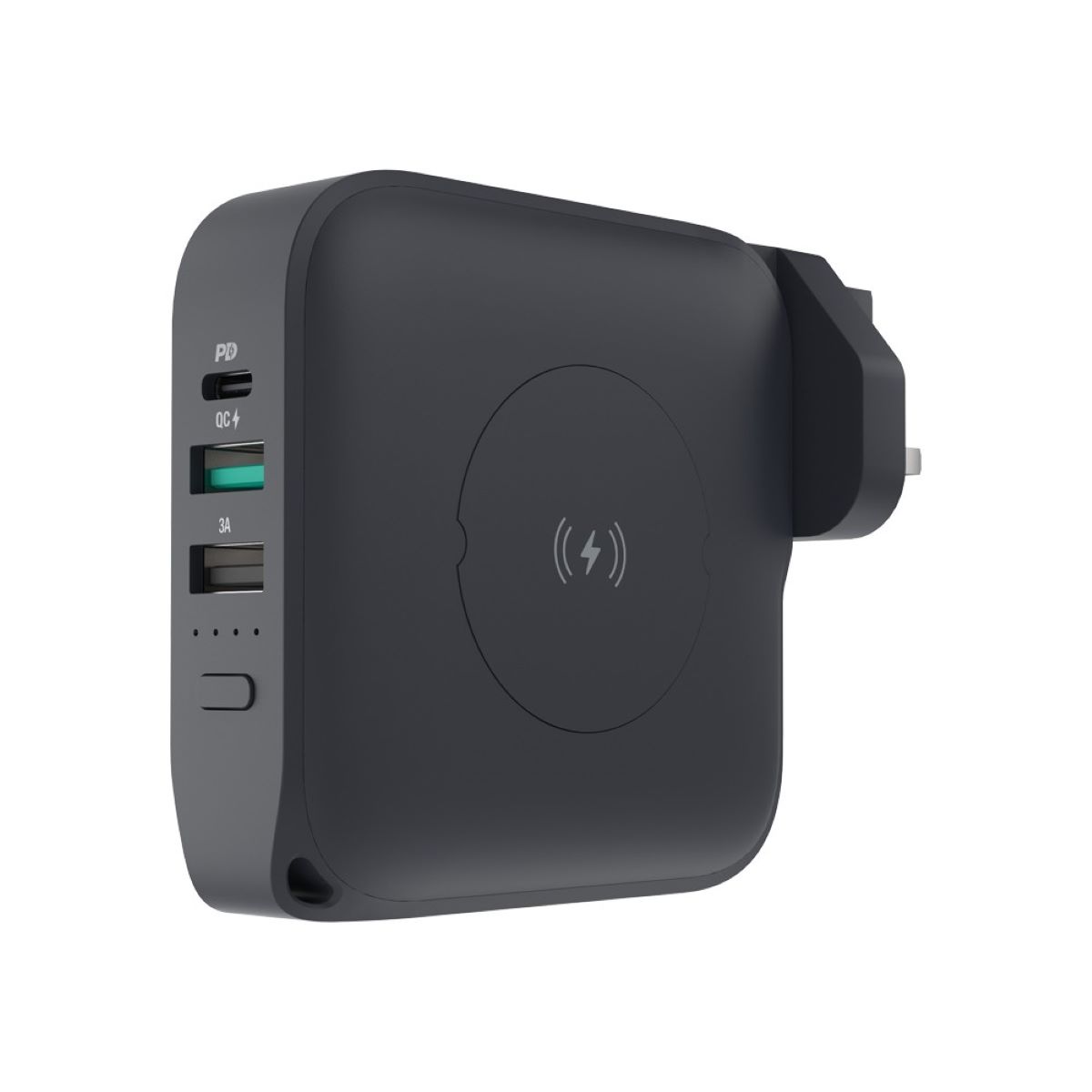Introduction
Welcome to the world of banking, where financial transactions are conducted with ease and convenience. As you navigate through the various banking services and products available, you may come across the term “current.” But what does “current” actually mean in the context of banking? In this article, we will explore the concept of current accounts, their features, and why they are an essential part of everyday financial management.
When you hear the word “current” in relation to banking, it refers to a specific type of account offered by banks and financial institutions. A current account is designed for individuals, businesses, and organizations to manage their day-to-day financial activities effectively. It serves as a hub for receiving and making payments, managing cash flow, and conducting various transactions.
Current accounts come in different forms, tailored to meet the specific needs of various customers. For individuals, these accounts provide a central platform for personal financial management, offering features such as checkbooks, debit cards, and online banking facilities. On the other hand, businesses and organizations can benefit from specialized current accounts that offer additional services like merchant solutions, payroll management, and overdraft facilities.
One of the key features that make current accounts unique is their flexibility. Unlike savings accounts that are primarily used for preserving and growing funds, current accounts are designed for frequent and regular transactions. They allow account holders to deposit and withdraw funds as needed, providing easy access to their money at any time.
Another important aspect of current accounts is the wide range of benefits they offer. These benefits may include online banking services, mobile banking apps, electronic fund transfers, and the ability to set up recurring payments such as utility bills or loan repayments. Additionally, current accounts often provide account holders with detailed statements, keeping them informed about their spending and transaction history.
While both current accounts and savings accounts serve different purposes, it is important to understand the distinction between the two. Savings accounts are focused on accumulating and growing funds over time, often offering higher interest rates. In contrast, current accounts prioritize day-to-day financial management, focusing on transactions and providing quick and easy access to funds.
Choosing a current account is a decision that should be based on your individual needs and financial goals. If you find yourself frequently making transactions, managing bills, or needing easy access to your funds, a current account is likely the right choice for you. It offers convenience and flexibility in handling your day-to-day financial affairs.
In the next sections, we will delve deeper into the process of opening a current account, managing its features, and the associated fees and charges. We will also discuss the security measures in place to protect your account and how to make the most of your current account experience. So let’s dive in and explore the world of current accounts!
Definition of “current” in banking
When it comes to banking, the term “current” refers to a specific type of account offered by financial institutions. A current account, sometimes also referred to as a checking account, is designed to provide a platform for individuals, businesses, and organizations to manage their day-to-day financial transactions efficiently.
A current account serves as a central hub for various banking activities, including depositing and withdrawing funds, making payments, and conducting transactions. It offers account holders the flexibility to manage their money effectively and access it whenever needed.
One of the key features of a current account is the ability to write checks. Checkbooks associated with current accounts allow individuals and businesses to make payments to recipients by issuing checks. These checks can be used instead of carrying cash or making direct payments through electronic transfers.
In addition to checkbooks, current accounts also provide account holders with debit cards. Debit cards are linked directly to the current account and allow for easy and convenient access to funds. They can be used at automated teller machines (ATMs) for cash withdrawals and at point-of-sale terminals to make purchases.
Furthermore, current accounts offer online banking capabilities. This means that account holders can access their accounts through a secure online platform provided by the bank. Online banking allows for convenient management of funds, including checking account balances, reviewing transaction history, making transfers, and paying bills online.
It’s important to note that while current accounts offer various conveniences, they do not typically accrue significant interest on the balance. Instead, the focus of a current account is on facilitating everyday transactions and providing easy access to funds.
Overall, “current” in the context of banking refers to an account that enables individuals, businesses, and organizations to manage their day-to-day financial operations efficiently. With features such as checkbooks, debit cards, and online banking, current accounts play a crucial role in the modern banking landscape, providing convenience, flexibility, and ease of use for account holders.
Types of current accounts
When it comes to choosing a current account, there are several types available to cater to the diverse needs of individuals, businesses, and organizations. Each type of current account offers specific features and benefits that align with different financial requirements. Here are some common types of current accounts:
- Individual Current Account: This type of current account is designed for personal use. It offers features such as checkbooks, debit cards, and access to online banking services. Individual current accounts are suitable for individuals who need a convenient way to manage their day-to-day financial transactions and have easy access to their funds.
- Joint Current Account: A joint current account is opened and managed by two or more individuals who have equal access to the account. This type of account is commonly used by couples, family members, or business partners who want to combine their finances for shared expenses and joint financial management.
- Business Current Account: As the name suggests, this type of current account is specifically tailored for businesses. It offers features and services that cater to business requirements, such as merchant solutions, payroll management, and overdraft facilities. A business current account helps separate personal and business finances and facilitates smooth financial management for companies.
- Community Current Account: Community current accounts are offered by banks and financial institutions with a focus on serving specific communities, such as local businesses, nonprofit organizations, or community groups. These accounts may come with specialized services and benefits tailored to the needs of the community they serve, fostering financial inclusion and support for local initiatives.
- Foreign Currency Current Account: This type of current account allows account holders to transact in different foreign currencies. It can be beneficial for individuals or businesses involved in international trade or frequently dealing with foreign currencies. Foreign currency current accounts eliminate the need for currency conversions and facilitate seamless international transactions.
It’s important to carefully consider the specific features, requirements, and fees associated with each type of current account before making a decision. Assess your financial needs, whether personal or business-related, and choose the type of current account that best suits your requirements and facilitates effective financial management.
Features and benefits of current accounts
Current accounts offer a range of features and benefits that make them essential tools for managing day-to-day financial transactions. Whether you’re an individual or a business, here are some key features and benefits of current accounts:
- Easy access to funds: Current accounts provide convenient and immediate access to your funds. Whether through a checkbook, debit card, or online banking, you can withdraw cash or make payments anytime, anywhere.
- Check-writing privileges: With a current account, you can write checks to make payments to recipients. This allows for a secure and convenient way to settle bills, make purchases, or perform financial transactions.
- Debit card usage: Current accounts are typically accompanied by debit cards that allow you to make purchases in-store or online. These cards are linked directly to your account, providing a convenient alternative to cash transactions.
- Online banking services: Most current accounts come with online banking capabilities, giving you the flexibility to manage your finances anytime, anywhere. Online banking allows you to check account balances, review transaction history, transfer funds, pay bills, and set up automatic payments.
- Direct deposit and standing orders: Current accounts offer the convenience of direct deposit, allowing your salary or income to be automatically credited to your account. Standing orders can also be set up to make regular payments, such as rent or loan installments, without requiring manual intervention.
- Transaction monitoring: Current accounts provide detailed statements that help you track your spending and monitor your transactions. These statements provide a clear overview of where your money is going, making it easier to budget and manage your finances.
- Overdraft facilities: Many current accounts offer overdraft facilities, which allow you to withdraw more money than you have in your account, up to a predetermined limit. This can provide a financial safety net during periods of temporary cash flow shortages.
- Flexibility for different account types: Current accounts can be tailored to meet the specific needs of individuals, businesses, and organizations. Whether you’re a solo entrepreneur, a small business owner, or part of a larger corporate entity, there are current account options available to cater to your unique requirements.
Overall, the features and benefits of current accounts provide individuals and businesses with the tools they need for seamless day-to-day financial management. The combination of easy access to funds, check-writing privileges, debit card usage, online banking services, and transaction monitoring ensures that you have the flexibility and control to efficiently handle your financial transactions.
How current accounts differ from savings accounts
While both current accounts and savings accounts are offered by banks and financial institutions, they serve different purposes and have distinct characteristics. Understanding the differences between these two types of accounts is important in order to choose the right account for your financial needs. Here’s how current accounts differ from savings accounts:
- Usage: Current accounts are primarily used for day-to-day financial transactions and managing regular cash flow. They are designed to facilitate frequent deposits and withdrawals, and provide easy access to funds for everyday expenses. On the other hand, savings accounts are meant for long-term savings and accumulating funds over time. They are designed to help individuals and businesses save money and earn interest on their balances.
- Interest rates: Savings accounts typically offer higher interest rates compared to current accounts. As savings accounts are designed to encourage saving, banks provide interest on the money held in these accounts. In contrast, current accounts generally do not earn substantial interest on the balance, as their primary focus is on transactional activity and providing easy access to funds.
- Restrictions: Current accounts have fewer restrictions compared to savings accounts. With a current account, you can deposit and withdraw money as frequently as needed, with no limitations on the number or size of transactions. Savings accounts, however, may have withdrawal limits and may require advance notice for large withdrawals or early withdrawals from fixed-term savings accounts.
- Features: Current accounts offer features such as checkbooks, debit cards, and online banking services to facilitate easy money management and transactions. Savings accounts, while they may have some of these features, are primarily focused on accumulating savings and do not typically provide check-writing facilities. Instead, savings accounts may offer additional features such as the ability to set up automatic transfers or the option to link to investment products.
- Account balances: Current accounts generally have lower average balances compared to savings accounts. Since current accounts are used for daily financial activities, the average balance tends to fluctuate as funds are continuously deposited and withdrawn. Savings accounts, however, are intended for long-term savings and may have higher average balances held in them.
- Transaction fees: Current accounts often have transactional fees associated with specific services, such as overdraft fees, ATM withdrawal fees, or fees for additional services like certified checks. Savings accounts may also have fees, but they are typically related to transactions exceeding the account’s limits or for specialized services like wire transfers.
Understanding the differences between current accounts and savings accounts will help you choose the right account for your specific financial goals. If you require frequent access to your funds for daily expenses and transactions, a current account is the most suitable option. However, if you are looking to save money over time and earn interest on your balance, a savings account would be a better choice.
Why choose a current account
Current accounts offer several advantages that make them a popular choice for individuals, businesses, and organizations. Here are some reasons why you might choose a current account:
- Convenience: Current accounts provide a convenient way to manage day-to-day financial transactions. With features like checkbooks, debit cards, and online banking, you have easy access to your funds for payments, purchases, and withdrawals at any time.
- Transaction facilitation: Current accounts are specifically designed to facilitate frequent and regular financial transactions. Whether you need to make payments to individuals or businesses, write checks, or perform electronic transfers, a current account streamlines these activities and makes them hassle-free.
- Financial organization: Managing your finances becomes more organized with a current account. You can keep track of your income and expenses through detailed statements and online banking platforms, making budgeting and financial planning easier.
- Flexibility: Current accounts offer flexibility in terms of accessing and managing your funds. You can deposit or withdraw money at your convenience, set up direct deposits or standing orders for regular payments, and use online banking services to manage your account from anywhere.
- Payment options: Current accounts provide a range of payment options for different situations. Whether it’s writing checks for bills or purchases, using a debit card for in-store or online payments, or making electronic transfers, a current account gives you multiple avenues to handle your transactions.
- Separation of finances: Many individuals and businesses choose a current account to separate their personal and business finances. By having a dedicated account for business-related transactions, you can maintain a clear distinction between personal and professional expenses.
- Efficient financial management: With easy access to transactional history and account statements provided by current accounts, you can efficiently manage your finances. This includes tracking your spending, reconciling transactions, and identifying patterns or areas where you can save money.
Overall, current accounts offer a range of benefits that make them an attractive option for individuals and businesses alike. With their convenience, transaction facilitation, financial organization, and flexibility, current accounts provide the tools needed for effective day-to-day financial management.
How to open a current account
Opening a current account is a straightforward process that can be done either online or at a local bank branch. Here are the general steps to open a current account:
- Research and choose a bank: Start by researching different banks and financial institutions to find one that offers the features and benefits that align with your financial needs. Consider factors such as account fees, interest rates, online banking services, and customer reviews.
- Gather necessary documentation: Before opening a current account, ensure that you have the required documentation. This typically includes proof of identity, such as a valid passport or driver’s license, and proof of address, such as a utility bill or bank statement with your name and address.
- Visit the bank or apply online: Depending on your preference, you can either visit the bank branch in person or apply online. If going to the bank branch, bring your required documentation and ask to speak with a representative who can guide you through the account opening process. If applying online, visit the bank’s website and follow their instructions to complete the online application.
- Complete the application: Whether applying in-person or online, you will need to complete an application form. This form will typically ask for your personal information, including your full name, contact details, date of birth, and employment details. You may also be required to provide information about your income and source of funds.
- Deposit the initial amount: Some banks may require an initial deposit to open a current account. Make sure you have the necessary funds available to deposit into your new account, as per the bank’s requirements.
- Provide necessary verification and documentation: Depending on your country and the bank’s policies, you may be required to provide additional verification or documentation. This can include proof of income, business registration documents (for business accounts), or additional identification documents.
- Read and sign the terms and conditions: Before finalizing the account opening, carefully read the terms and conditions provided by the bank. These outline the account fees, terms of service, and other important details. If you agree to the terms and conditions, sign the necessary documents to proceed.
- Receive account details and access: Once the account opening process is complete, the bank will provide you with your account details, including your account number and other relevant information. If necessary, they will also provide you with instructions on how to access your account through online or mobile banking.
It’s important to note that the specific requirements and process may vary depending on the bank or financial institution you choose. Always ensure that you understand the terms and conditions, fees, and any additional requirements before opening a current account.
Managing and using a current account
Once you have opened a current account, effectively managing and using it is crucial for smooth financial operations. Here are some key aspects of managing and using a current account:
- Monitoring transactions: Regularly review your account statements and transaction history to stay updated on your financial activities. This will help you identify any unauthorized transactions, track your expenses, and ensure the accuracy of your records.
- Budgeting: Create a budget to track your income and expenses. This will help you prioritize your spending, save money, and ensure that you have sufficient funds in your account to cover necessary expenses.
- Utilizing online banking: Take advantage of the online banking services provided by your bank. This includes checking your account balance, transferring funds, setting up automatic payments, and managing your account preferences from the convenience of your computer or mobile device.
- Setting up alerts: Many banks offer alert services that notify you of specific account activities, such as low balance alerts, payment due reminders, or unusual account activity. Setting up alerts can help you stay on top of your finances and avoid any unexpected issues.
- Secure account access: Keep your account information secure and confidential. Use strong passwords for online banking and avoid sharing your account details with anyone. Regularly monitor your account for any suspicious activity and report any concerns to your bank immediately.
- Managing fees: Be aware of the fees associated with your current account and take steps to minimize them. Avoid overdraft situations by closely monitoring your account balance, and familiarize yourself with the relevant fee structure for services such as ATM usage, check printing, or international transactions.
- Regularly updating information: Inform your bank of any changes to your personal information, contact details, or employment status. This will ensure that your account records are accurate and up to date, and enable the bank to reach you with important account-related information.
- Utilizing additional services: Explore and take advantage of any additional services offered by your bank. This can include setting up direct deposits for regular income, linking your account to digital payment platforms, or using mobile banking apps to conveniently manage your finances on the go.
- Seeking assistance when needed: If you have any questions or concerns about your current account, don’t hesitate to reach out to your bank’s customer service. They can provide guidance, clarify any doubts, and assist you with any account-related issues.
By effectively managing and using your current account, you can ensure that your financial transactions are streamlined, expenses are controlled, and your account remains secure. Regular monitoring, budgeting, utilization of online banking services, and proactive account management will help you make the most of your current account and optimize your financial management.
Common fees and charges associated with current accounts
While current accounts offer convenience and flexibility for managing everyday financial transactions, it’s important to be aware of the fees and charges that may be associated with these accounts. Here are some common fees and charges to consider when opening a current account:
- Monthly maintenance fees: Some banks may charge a monthly maintenance fee for maintaining a current account. This fee covers the basic operational costs of the account and may vary based on the type of account and the services offered.
- ATM usage fees: If you use an ATM that is not affiliated with your bank’s network, you may be charged an ATM usage fee. This fee typically applies when you withdraw cash or check your account balance at a non-partner ATM.
- Overdraft fees: Overdraft fees may be charged if you spend more money than is available in your account. This can occur when writing a check or making a payment that exceeds your account balance. It’s important to monitor your account closely to avoid overdrawing and incurring these fees.
- Transaction fees: Some banks may charge transaction fees for certain types of transactions, such as wire transfers, foreign currency exchanges, or cashier’s checks. These fees vary and are typically associated with specific services that may require additional processing or administration.
- Check printing fees: If you need additional checks beyond the initial supply provided by the bank, there may be a fee for printing these checks. It’s worth noting that some banks offer options for free or discounted check printing, depending on the type of account or account balance.
- Excess transaction fees: Some current accounts have limitations on the number of transactions you can make in a month. If you exceed this limit, you may be charged an excess transaction fee for each additional transaction.
- Stop payment fees: If you request a stop payment on a check or a pre-authorized payment, your bank may charge a fee for this service. This fee covers the administrative costs associated with canceling or blocking a specific transaction.
- Account closure fees: If you decide to close your current account, some banks may charge a fee for account closure. This fee is typically disclosed in the terms and conditions and can vary depending on the specific bank’s policies.
- Additional service fees: Depending on the bank and the type of current account, there may be fees for additional services such as expedited delivery of debit cards, account statement copies, or account balance inquiries over the phone.
It’s important to carefully review the fee schedule and terms and conditions provided by your bank before opening a current account. Understanding these fees and charges will help you make informed decisions about your financial transactions and ensure that you can effectively manage the costs associated with your account.
Security measures for current accounts
Ensuring the security of your current account is of paramount importance. Banks and financial institutions implement various security measures to protect your account from unauthorized access and fraudulent activities. Here are some common security measures in place:
- Secure login credentials: Banks require secure login credentials such as a username and a password or a PIN to access your current account. It’s crucial to choose strong, unique passwords and update them regularly to reduce the risk of unauthorized access.
- Two-factor authentication: Many banks offer two-factor authentication (2FA) as an additional layer of security. This involves requiring a second form of verification, such as a unique code sent to your mobile device, to authenticate your identity during the login process.
- Encryption: Banks utilize encryption technology to protect data transmitted between your computer or mobile device and their servers. This ensures that your personal and financial information remains confidential and secure during online banking transactions.
- Fraud monitoring: Banks employ sophisticated fraud monitoring systems to detect and prevent fraudulent activities. These systems analyze account activity in real-time and can flag suspicious transactions, helping to protect your account from unauthorized access and transactions.
- Secure online transactions: Financial institutions use secure protocols, such as SSL (Secure Sockets Layer), to encrypt online transactions. This ensures that your banking information remains private and cannot be intercepted by malicious parties during online purchases or fund transfers.
- Mobile banking security: Banks implement security measures for their mobile banking apps, such as user authentication, device recognition, and data encryption. It’s important to keep your mobile banking app up to date and only download it from trusted sources, such as official app stores.
- Account activity alerts: Many banks offer account activity alerts via email or SMS. These alerts notify you of specific account activities, such as large withdrawals or unusual transactions, allowing you to react promptly if any unauthorized activity occurs.
- Secure customer support: Banks ensure that their customer support channels adhere to security protocols. When contacting customer support, they may require specific verification steps to access your account information and protect your confidential details.
- Regular security updates: Banks continuously update their security systems to address emerging threats and vulnerabilities. It’s important to keep your devices and software up to date with the latest security patches to benefit from these enhancements.
- Financial institution guarantees: Many financial institutions provide guarantees regarding the security of their online banking services. These guarantees protect you against any financial loss resulting from unauthorized transactions, provided you have complied with the bank’s terms and conditions.
While banks employ various security measures to protect your current account, it’s also important for you to be proactive in safeguarding your account. This includes regularly monitoring your account activity, reviewing account statements, being cautious of phishing attempts, and promptly reporting any suspicious activity to your bank. By taking these measures, you can help ensure the security of your current account and protect your financial interests.
Conclusion
Current accounts play a vital role in everyday financial management, offering convenience, flexibility, and access to funds for individuals, businesses, and organizations. Understanding the definition of “current” in banking is essential for making informed decisions about your financial needs.
We explored the various types of current accounts available, such as individual, joint, business, community, and foreign currency accounts, each tailored to specific requirements. We also discussed the features and benefits of current accounts, including easy access to funds, check-writing privileges, debit card usage, online banking services, and transaction monitoring.
Comparing current accounts to savings accounts, we learned that while savings accounts focus on accumulating and growing funds, current accounts prioritize day-to-day financial transactions and quick access to money.
We discussed the process of opening a current account, which involves researching banks, gathering the necessary documentation, submitting an application, and making an initial deposit. Managing and using a current account involves monitoring transactions, budgeting, utilizing online banking services, securing account access, and seeking assistance when needed.
Furthermore, we explored the common fees and charges associated with current accounts, including monthly maintenance fees, ATM usage fees, overdraft fees, transaction fees, and check printing fees, among others.
Finally, we highlighted the security measures implemented by banks to protect current accounts, such as secure login credentials, two-factor authentication, encryption, fraud monitoring, and mobile banking security measures. We also discussed the importance of staying vigilant and proactive in protecting your account by regularly monitoring activity, keeping software updated, and promptly reporting any suspicious incidents.
In conclusion, current accounts offer individuals and businesses a convenient and efficient way to manage day-to-day financial transactions. By understanding the features, fees, and security measures associated with current accounts, you can make informed decisions to effectively manage your finances, protect your account, and optimize your financial management experience.

























